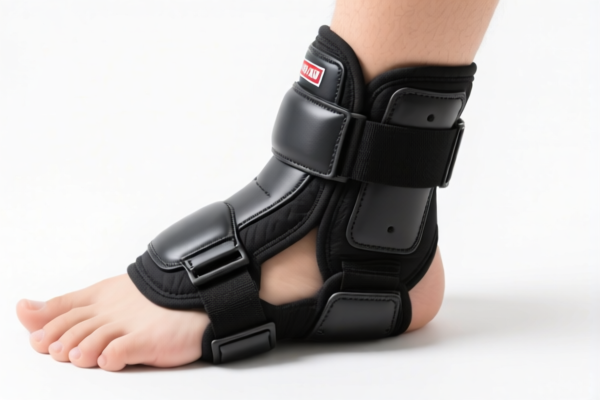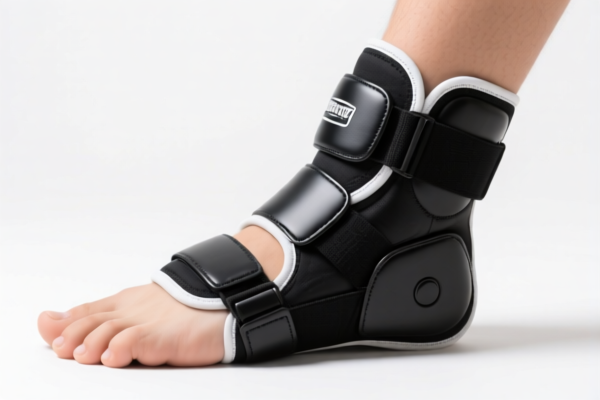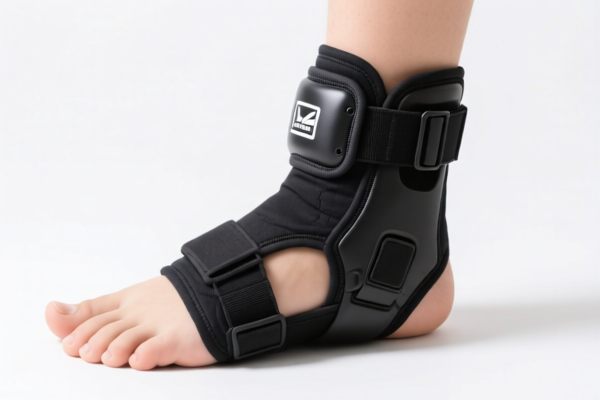| HS Code | Official Doc | Tariff Rate | Origin | Destination | Effective Date |
|---|---|---|---|---|---|
| 9021100090 | Doc | 30.0% | CN | US | 2025-05-12 |
| 6217109510 | Doc | 52.1% | CN | US | 2025-05-12 |
| 6217109520 | Doc | 52.1% | CN | US | 2025-05-12 |
| 6117809520 | Doc | 52.1% | CN | US | 2025-05-12 |
| 6117809510 | Doc | 52.1% | CN | US | 2025-05-12 |




Ankle Support
Ankle supports are devices used to stabilize the ankle joint and provide protection during activity or recovery from injury. They are employed by athletes, individuals recovering from sprains or other ankle injuries, and those seeking preventative measures against future injury.
Materials
Ankle supports are constructed from a variety of materials, impacting their level of support, comfort, and price point. Common materials include:
- Neoprene: Offers compression, warmth, and moderate support. Frequently used in sleeves and hinged supports.
- Elastic/Spandex: Provides compression and flexibility. Often used in lighter supports for mild instability.
- Plastic/Metal Stays/Hinges: Offer rigid support and limit range of motion. Found in more robust supports designed for significant instability or post-injury recovery.
- Straps (Velcro/Nylon): Used for adjustable compression and stabilization. Common in lace-up and hybrid designs.
- Foam Padding: Provides cushioning and comfort.
Purpose & Function
The primary functions of ankle supports include:
- Stabilization: Limiting excessive motion of the ankle joint, reducing the risk of re-injury or further damage.
- Compression: Reducing swelling and promoting blood flow.
- Proprioception: Enhancing the body’s awareness of the ankle’s position in space, improving balance and coordination.
- Support: Providing external reinforcement to weakened ligaments or tendons.
- Pain Reduction: Decreasing discomfort associated with ankle injuries or chronic conditions.
Usage Scenarios
Ankle supports are utilized in a wide range of situations:
- Athletic Activities: Preventing injuries during sports like basketball, soccer, volleyball, and running.
- Post-Injury Rehabilitation: Supporting the ankle during recovery from sprains, strains, fractures, or surgeries.
- Chronic Ankle Instability: Providing ongoing support for individuals with recurrent ankle problems.
- Preventative Measure: Offering protection for individuals with a history of ankle injuries or those at high risk.
- Daily Wear: Providing comfort and support for individuals with arthritis or other conditions affecting the ankle joint.
Common Types
Several types of ankle supports cater to different needs and levels of support:
- Ankle Sleeves: Provide compression and mild support. Suitable for minor instability or preventative use.
- Lace-Up Ankle Supports: Offer adjustable compression and support through a lacing system. Commonly used for moderate instability.
- Hinged Ankle Supports: Provide rigid support and limit range of motion. Used for significant instability or post-injury recovery. These can be single or double hinged.
- Stirrup Ankle Supports: Offer medial and lateral support with rigid stays. Often used for acute injuries or post-surgical support.
- Hybrid Ankle Supports: Combine features of different types, such as a sleeve with straps or hinges.
- Figure-8 Ankle Supports: Utilize straps that wrap around the ankle in a figure-eight pattern to provide support and compression.
Ankle supports are orthopedic appliances designed to provide support and stability to the ankle joint, typically used for injury recovery or preventative measures during physical activity. They can be made from various materials, including plastics, textiles, and polymers.
The following HS codes are relevant based on the provided reference material:
- 9021100050: Bone plates, screws and nails, and other internal fixation devices or appliances. This code applies if the ankle support is a rigid device used for internal fixation following a fracture or surgical procedure. The basic tariff is 0.0%, with no additional tariff, but a tariff of 30.0% will be applied after April 2, 2025.
- 9021100090: Other orthopedic or fracture appliances, and parts and accessories thereof. This code covers a broader range of ankle supports that are not specifically internal fixation devices. The basic tariff is 0.0%, with no additional tariff, but a tariff of 30.0% will be applied after April 2, 2025.
Regarding HS code 9021100050 and 9021100090, please note the tariff will be 30.0% after April 2, 2025.
Customer Reviews
No reviews yet.